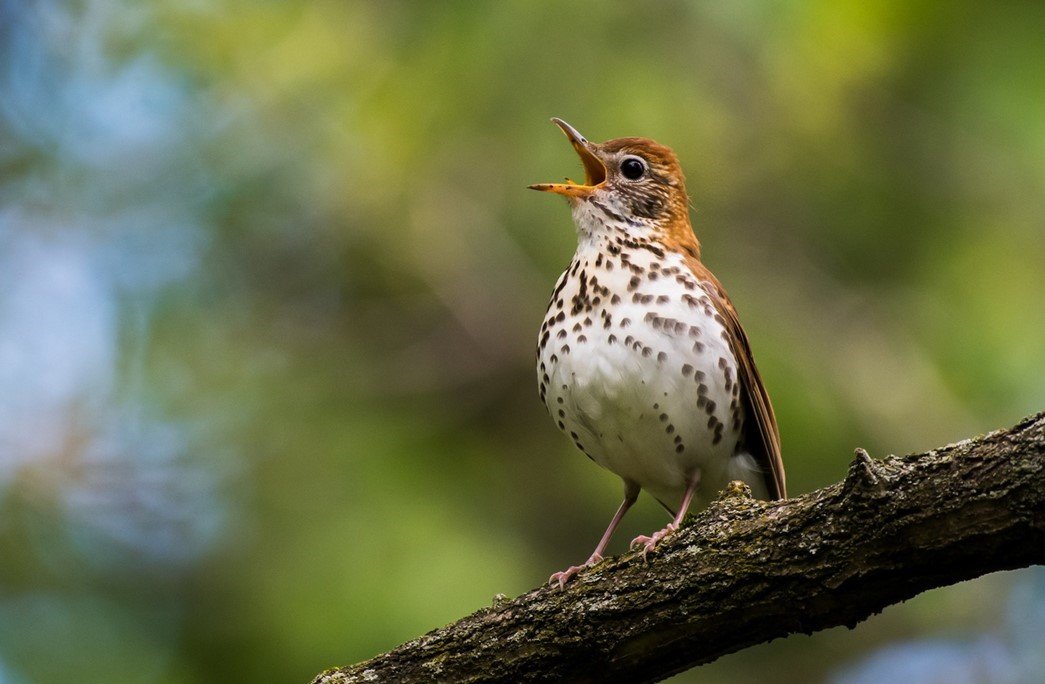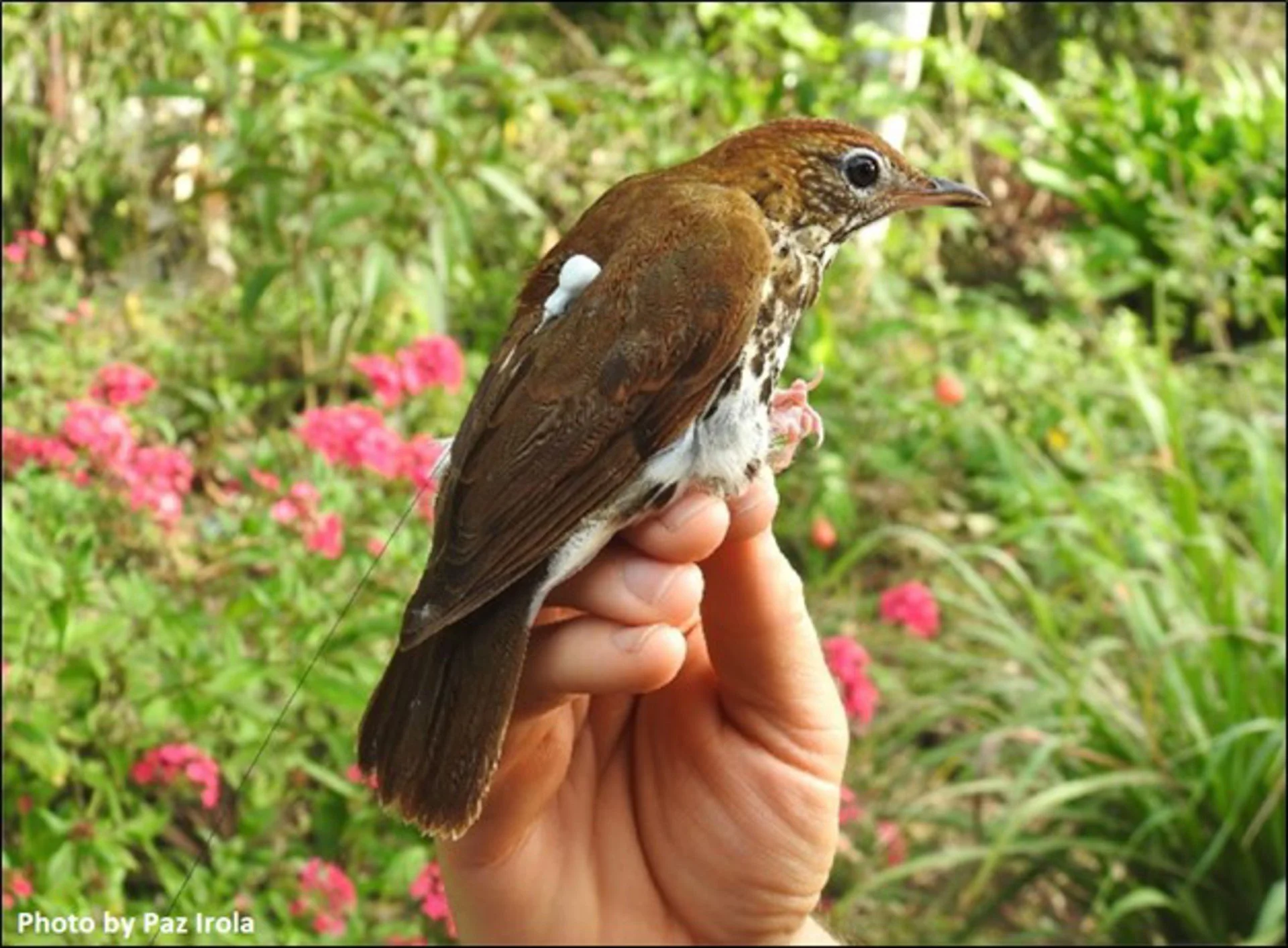Tracking a Secretive Songbird in the Tennessee River Gorge and Beyond
By Austin Young
Singing Wood Thrush. Photo Credit: John Petruzzi.
What is Migration?
Migration is a cyclical, annual movement where an animal makes a two-way, round-trip movement between the breeding grounds and overwintering grounds. Many migratory birds use the forests of the Tennessee River Gorge that migrate there to breed or to briefly stopover en route to their breeding locations to the north or their overwintering locations to the south. They migrate because they cannot sustain year-round living in their breeding areas due to the seasonal availability of food resources, i.e. cold winters reduce the abundance of insects and seeds.
The Wood Thrush
One migratory species that has also experienced drastic declines in recent years and is considered an icon of eastern North American forests is the Wood Thrush (Hylocichla mustelina). For reasons known and unknown, they have declined by nearly 60% in the last half-century. The declines in their population sizes have unanimously brought to our attention its need for conservation across its entire breeding range in the U.S. and Canada. Wood Thrushes breed throughout the eastern United States and southeastern Canada, migrating south to overwinter in far Central America and northwestern South America. They primarily forage quietly on the forest floor and eat insects, snails, and small salamanders but also enjoy their fruits and veggies. A fun fact is that female Wood Thrushes will hone in on snail shells, which can litter the forest floor, and are ultimately used during egg development before the female lays her eggs!
If you are out and about hiking in the Gorge during the spring and summer breeding seasons, you can hear the males performing a memorable song that serves to loudly defend their breeding territories and to attract mates. Females are known to sing as well but their song is noticeably different and softer than a male’s song.
Where do Wood Thrushes Live?
Here is a map showing the relative abundance of Wood Thrushes during breeding, migration, and wintering stages of their annual life cycle. The darker red areas show where high densities of Wood Thrushes occur during the summer months. The darker blue areas show where high densities are during the winter months. Map Credit: The Cornell Lab of Ornithology: State of the Birds 2016.
Wood Thrushes in the River Gorge and Beyond
Importantly, Wood Thrushes are still a relatively common bird on the landscape and we want to keep them that way. However, the information needed to understand why Wood Thrushes, and other common species, are declining is exceedingly difficult to obtain because they are small in size, inhabit dense forest, and migrate thousands of kilometers. Recent advancements in tracking technology have created the opportunity to learn more about these charismatic birds! In the spring and summer of 2024, TRGT will be deploying 10 tags on Wood Thrushes that will be tracked using our motus tower and others across the hemisphere. Click here to view our recent article describing more about our motus station.
How do we track them?
Here is a photo of a bird bander holding a Wood Thrush that is fitted with a lightweight motus tag that sends signals to a motus tower with the bird’s location. The tower stores the location information of the tag that is ultimately used by biologists.The transmitter comprises a GPS unit and an antenna to communicate with a tower. The GPS unit is contained in the white apparatus on the back of the bird. The antenna extends down the back toward the tail of the bird. Photo Credit: Paz Irola.
Ultimately, tagging Wood Thrushes will inform future conservation and management for this Species of Greatest Conservation Need and help us at TRGT better understand the role of our lands in the big picture of passerine migration while simultaneously providing insights about our forests to ensure a healthy river gorge for generations. This project will forge and strengthen TRGT partnerships and broader state, national, and international bird conservation partnerships resulting in a healthier Tennessee River Gorge for generations and a broader impact of hemispheric-level bird conservation action.
To learn more about North American bird migration, check out this interactive map from the National Audubon Society: https://explorer.audubon.org/home?legend=collapse&layersPanel=expand




